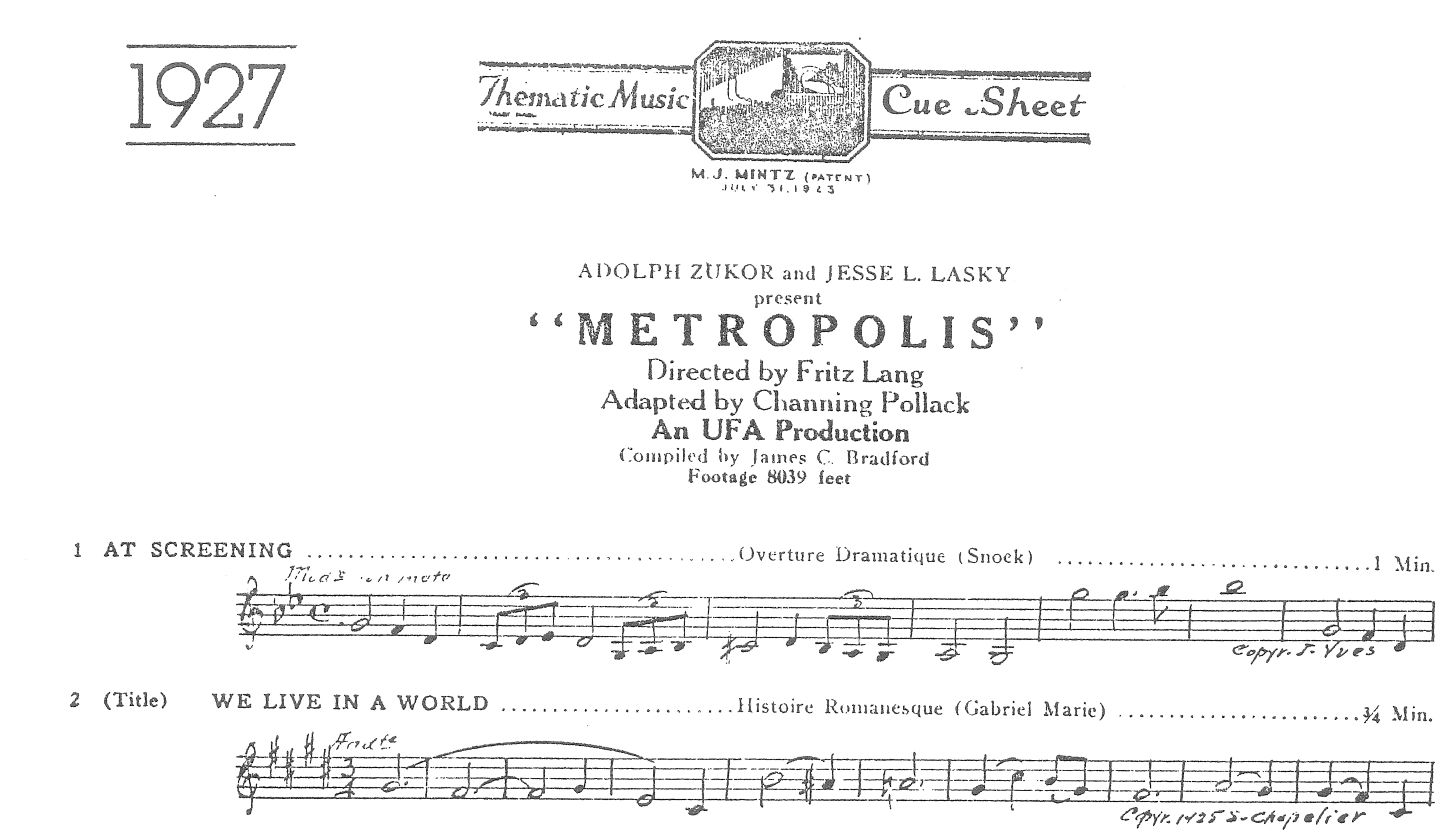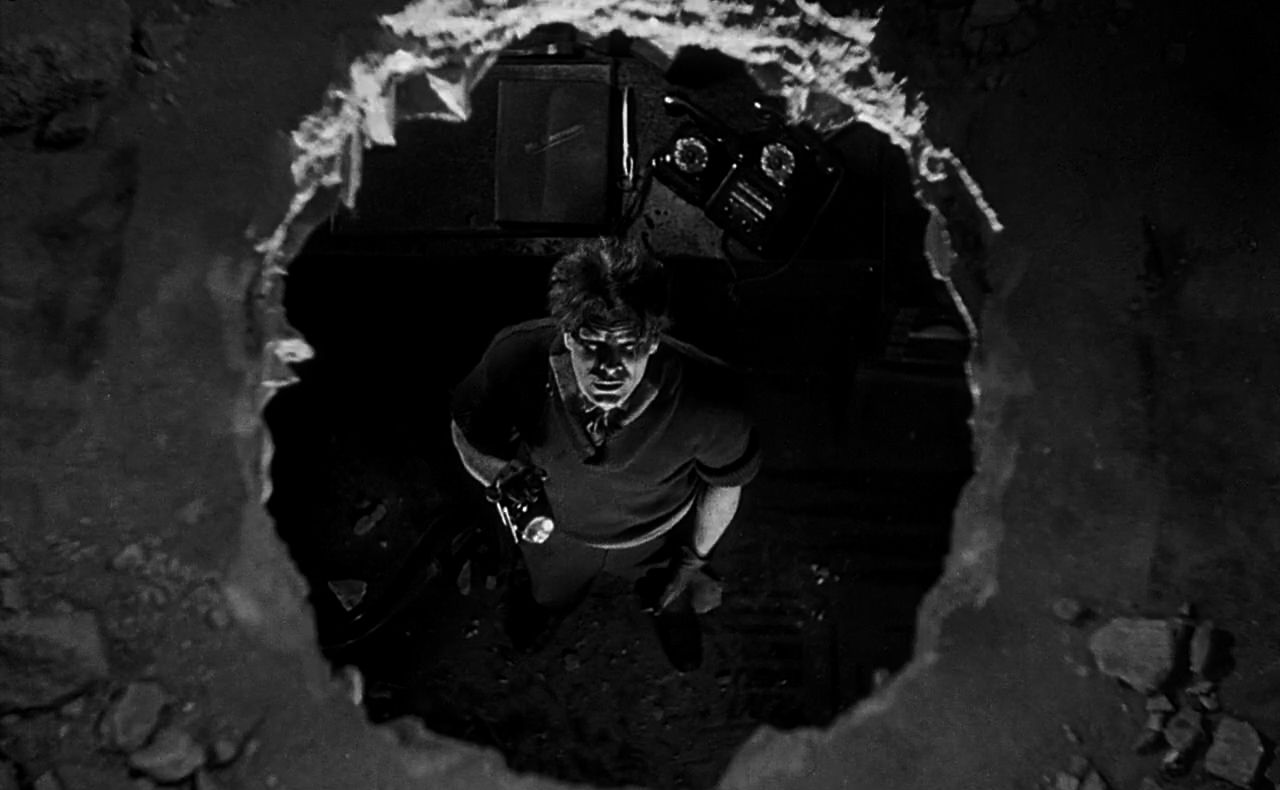
Cue sheets are documents used in film industry since first decade of XX century. Although the way they were used has changed a bit, cue sheets still are great tool for planing and describing structure of soundtrack. To fully understand importance of cue sheets we need to look back at the era of silent film.
Music is connected with film since the very first projections organized by Lumière brothers in 1895. It became clear that films without music are somehow incomplete, as Kurt London wrote – dimensionless, so theatres had to hire musicians. Musicians were responsible for soundtracks – pianists in small towns often were forced to improvise without watching the film first, but music directors who worked with orchestras in large theatres were able to collect score sheets and precisely plan the performance for each projection. In 1909, the first anthologies were published aimed to help pianists and music directors. One of the earliest publications was Motion Picture Piano Music: Descriptive Music to Fit the Action, Character or Scene of Moving Pictures - compiled of over fifty short scores by Gregg A. Frelinger. Soon, the anthologies were considered very useful and theatres began to collect them.
Anthologies were the result of creative work of composers and publishers. However, the producers also understood the need to coordinate the musical layer of the film. So Max Winkler, employee of The Universal Film Company came with solution - Winkler was watching films, before they were placed into distribution, and preparing sets of matched compositions. Cue sheets took the form of tables containing information about the length of each shot, scene title and title of suggested track. Initially, the cue sheets were compilations but over time they became the carrier of original compositions.
Today cue sheets have a similar role. They are a tool that allows you to plan the soundtrack. Since mainly original compositions are now used, the document also facilitates communication between the composer and film-makers. It can be a simple table containing information about which fragment should sound at what moment, but it can also provide informations about prices. Every cue is numbered and its on-screen action is described, timecode of start and endpoint of each cue is also provided. Here is an example of simple cue sheet. You can also take a look at the cue sheet for classic science-fiction movie Metropolis directed in 1927 by Fritz Lang.
Kurt London, Film Music, New York: Arno Press & The New York Times, 1970. James Wierzbicki, Film Music: A History, Abingdon: Routledge 2009.

If you can think of any particular style, instrumentation or arrangement that would fit to your project - I can do it for you. Sky is the limit. Just share your idea I'll create your desired soundtrack.
But if you prefer to stay focused on other aspects, you can show me your project, no matter if it is a film, spectacle or video game, you can show me our project and I'll come up with something exclusively for you.
I can provide you either score sheets or complete, mixed and mastered recordings. Nowadays composer can create big projects only with computer and samples but sometimes real instruments are better solution. You can decide what will be recorded and ho it will be done.
 Making music in terminal
How far can we go with digital minimalism? Can we make music on cheapest computer?
Making music in terminal
How far can we go with digital minimalism? Can we make music on cheapest computer?
 Leitmotif in film scoring
What are leitmotifs? Why are they great way to create a memorable soundtrack?
Leitmotif in film scoring
What are leitmotifs? Why are they great way to create a memorable soundtrack?
 What are cue sheets?
Cue sheet makes it easier to prepare a good soundtrack. Let's see how it looks and what its history is.
What are cue sheets?
Cue sheet makes it easier to prepare a good soundtrack. Let's see how it looks and what its history is.